I Dig Sports
Tom Curran hat-trick sends Glamorgan tumbling to 44 all out
Published in
Cricket
Thursday, 25 July 2019 15:25
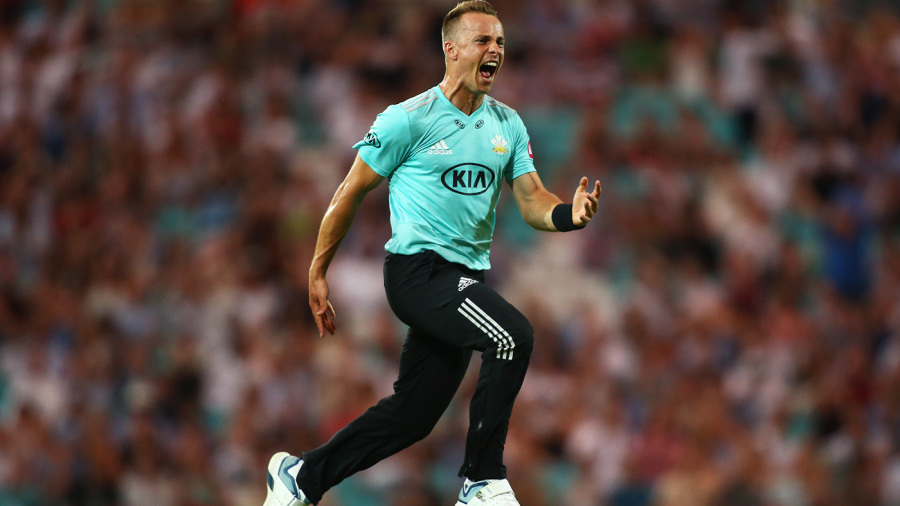
Surrey 141 (Jacks 40, Salter 4-23, de Lange 4-26) beat Glamorgan 44 (Curran 3-3, Batty 3-7, Tahir 3-8)
Surrey's second near-25,000 sell-out crowd in three days at the Kia Oval roared their approval as Tom Curran took a spectacular hat-trick in his opening new-ball over to set up a dramatic 97-run victory against Glamorgan, who subsequently crashed to 44 all out in 12.5 overs - their lowest total in T20 cricket.
South Africa legspinner Imran Tahir then took a triple-wicket maiden himself, removing Graham Wagg, Andrew Salter and Marchant de Lange in the space of five balls in an almost-as-remarkable 12th over, to send Glamorgan hurtling from 40 for 6 to 40 for 9.
Offspinner Gareth Batty quickly completed the rout, bowling last man Michael Hogan in the next over to finish with figures of 3 for 7. Tahir's figures were 3 for 8 and Curran's 3 for 3 in two overs. It was Surrey's first Vitality Blast win of the season, in their third south group game, while Glamorgan remained winless after three matches.
Curran's memorable hat-trick came when he first bowled David Lloyd for 4 with a beauty and then, with the fourth ball of the second over of Glamorgan's innings, had Colin Ingram held by Rikki Clarke at slip as he tried to force into the off side. Remarkably, new batsman Billy Root also edged to Clarke next ball in an almost carbon copy of Ingram's dismissal - leaving Curran to sprint away in celebration towards the Peter May Stand, followed by his jubilant team-mates.
When Surrey captain Jade Dernbach then had Owen Morgan caught at the wicket for 2, in his second over with the new ball, Glamorgan were a sickly 9 for 4. And it got worse for the Welsh county when, in the eighth over, Pakistan left-hander Fakhar Zaman lofted Batty to long-on after making just 17 on his Glamorgan debut.
From 33 for 5, Glamorgan's chances were slim, but it was still shocking when Chris Cooke then holed out at 39 for 6 and they fell away so rapidly against the spin of Tahir and Batty to what was a humiliating defeat.
Offspinner Salter had earlier taken a career-best 4 for 23 as Surrey were bowled out for 141, with Glamorgan putting in a fine performance in the field with some excellent catching and ground fielding.
Fast bowler de Lange also impressed, taking the last three Surrey wickets in five balls in the final over to finish with 4 for 26. De Lange bowled Dernbach for 2, removed Batty next ball when the veteran former Surrey captain hit his own wicket as he tried to make room to cut and, from the final ball of the innings, had Tahir caught at mid-off.
It was Salter's four-wicket burst in mid-innings, however, which derailed Surrey's effort after Will Jacks and Aaron Finch had added 61 in 6.4 overs for the second wicket after de Lange had dismissed opener Mark Stoneman in the second over, caught for 5 at third man from a slashed square cut that he could not keep down.
From 73 for 1 they slumped to 99 for 6 after Jacks' sparkling 26-ball 40, which featured two sixes and four fours, had ended with a tickle to keeper Cooke from a leg-side ball from Wagg that would have been a wide had the batsman not touched it.
Salter then struck with his first delivery, at the start of the 10th over, to have Finch brilliantly caught on the leg-side boundary by Root for 28 from 20 balls. From the last ball of that over, he forced Clarke to chip a tame return catch and, in his next over, Curran also fell for 1 when he was superbly held by a diving Lloyd at extra cover.
Ollie Pope went for 12, miscuing a reverse flick at Salter to short third man, and Surrey's seventh wicket pair of Jordan Clark and Liam Plunkett tried hard to put some sort of total on the board - dealing mainly in ones and well-run twos in a stand of 38 in five overs.
Plunkett did, though, hit Salter's final ball for six over long-off in his 18, which ended in the 19th over when he lofted Wagg's left-arm medium pace to long-on. Wagg took 2 for 28 and Clark ended unbeaten on 26, from 27 balls.
The match had begun 40 minutes late at 7.10pm, initially because of a threat of lightning in steamy temperatures, which remained in the low 30s centigrade despite an early evening build-up of cloud that then, five minutes before play was originally due to start at 6.55pm, produced a short but torrential downpour which sent many people in the capacity crowd - Surrey have attracted full houses for both this week's T20 home games against Middlesex and Glamorgan - scurrying for cover.
Play was also held up for a few minutes towards the latter part of Surrey's innings when a fox ran on to the outfield, and would not move. It also made a deposit on to the Oval turf, which itself had to be removed with a shovel after the animal had been driven away by stewards.
Tagged under
Dane Vilas and Saqib Mahmood confirm Lancashire's Roses hegemony
Published in
Cricket
Thursday, 25 July 2019 15:33
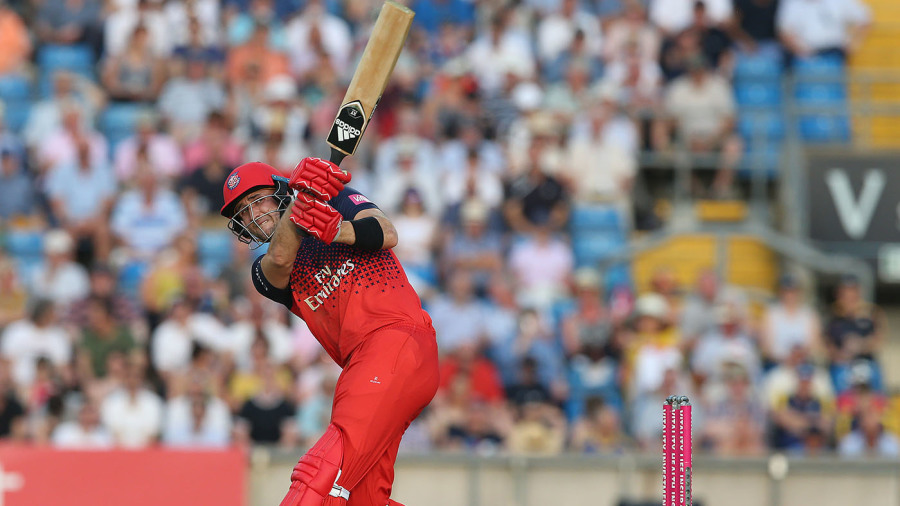
Lancashire 170 for 6 (Vilas 43) beat Yorkshire 161 for 9 (Pooran 43, Mahmood 3-33) by nine runs
A Roses T20 tie on an impossibly sultry Headingley evening with temperatures still close to 30C: Britain's second hottest day on record was a draining accompaniment to a raucous Blast tie that generally combusts of its own accord and it was Lancashire who confirmed themselves as one of the powerhouses of the North Group with a nine-run win.
Three successive Roses T20 wins have given Lancashire bragging rights over their Pennines rivals and, on this evidence, they will remain garrulous all summer. Perhaps the dismal rail service across the tops is a consolation for the Tykes after all, as it keeps their rivals well out of earshot.
Lancashire, under the experienced leadership of Dane Vilas, once again looked to be a well-drilled, knowledgeable side, potential tournament winners. Yorkshire, despite a sterling effort from West Indian Nicholas Pooran to turn the game in their favour, now have one win in four and are still struggling to find a convincing blend.
Pooran is now four matches into his five-game stay. He endeavoured to shoulder responsibility for Yorkshire's pursuit of 171. He came in at 78 for 3 in the ninth over, replacing David Willey, who hobbled off after his pumped-up 32 from 25 balls had come to grief with a slog sweep to deep square. He soon lost Harry Brook, for 30, wised-out by Richard Gleeson who hammered one in short to outdo his foray down the pitch.
A prodigious backswing saw Pooran bully three leg-side sixes off the otherwise parsimonious legspinner Matt Parkinson with a destructive grace that spoke of his talent, but he was sixth out, bowled by Saqib Mahmood as he made room, leaving Yorkshire 31 short with 16 balls remaining. To all intents and purposes their hopes left with him.
Pooran's departure was a relief for Steven Croft, who had dropped him off Richard Gleeson on 8, pedalling back for a catch at long off. Croft, normally so reliable, got it in the neck, and then got it in the neck some more from the bulk of an 18,500 crowd.
But it was Mahmood, looking every inch a bowler of international pedigree if only, at 22, he can stay fit, who had most cause for delight as he returned 3 for 33 under considerable pressure. He had Dom Bess lbw for nought two balls later and when Jordan Thompson cut the requirement to 11 from three balls by squeezing a boundary through Maxwell's hands at long off, he closed the game out with a couple of 90mph yorkers.
There is data on everything these days, but not much, one will wager, on how Headingley pitches play on a parched night when ice cream melts in seconds, rivulets of sweat run off the most static spectator and Vinny the Viking, the Yorkshire mascot, deserved a hardship payment. It was at its most soporific - wasn't everybody - and did not concede a half-century all night, but Lancashire batted with intent from the outset, buoyed by the surprise return of Liam Livingstone from an intercostal injury.
Lancashire must have had their sights on 200 when Vilas and Glenn Maxwell were assembling a fourth-wicket partnership of 61 from 33 balls for the fourth wicket. If they had achieved that, they would have been unassailable. But both fell in quick succession and the final charge was left in the hands of Josh Bohannan and Keaton Jennings who both looked underpowered for the task and mustered only 28 from 27 balls between them and survived a couple of run-out opportunities and a dropped catch in the process.
Maxwell was overshadowed by Vilas, who has started the Blast season in excellent form. Nevertheless, Duanne Oliver's intervention when Maxwell had made 25 from 18 balls was an important one. It will be no surprise for regular observers of Olivier that he tried a bouncer, a quick one too, which Maxwell could only glove to the wicketkeeper as he became all of a tangle shifting to the offside.
As far as Yorkshire were concerned, there was personal satisfaction for Jack Shutt, a 22-year-old offspinner from Barnsley, who only learned shortly before the start that he was making his debut as a replacement for Josh Poysden, who will miss the tournament because of concussion after a fractured skull bowling in the nets
Shutt had only bowled twice in senior matches since May 28, recording 0 for 64 in a couple of 2nd XI Championship matches, but he maintained a blockhole length with intelligent changes of pace and flight and was rewarded as Steven Croft (reaching forward to Shutt's third ball, a low full toss) and Livingstone mishit to long on and long off respectively in his first two overs.
His success was striking enough for Yorkshire to limit his fellow offspinner, Bess, to a solitary over, and that, incidentally, in the Powerplay: spin in the opening six overs is a tactic used only rarely by Yorkshire in the Blast. But Yorkshire's young captain, Tom Kohler-Cadmore, a "temporary" stand-in for Steve Patterson, must wonder how to rev up a side that packs all its threat into the top order and which will soon be further weakened by Pooran's departure.
Tagged under

A blockbuster offseason that saw multiple superstars on the move has left the NBA without a consensus title favorite and put some oddsmakers in a conundrum of trying to figure out how the season will unfold.
Caesars Sportsbook posted season-win totals for each team Thursday afternoon. Seven teams opened with win totals greater than 50, led by the Milwaukee Bucks at 57. The Bucks won an NBA-best 60 games last season and are the clear-cut favorites in the Eastern Conference. The Philadelphia 76ers are next in the East at 54.5.
In the loaded Western Conference, the LA Clippers, who added Kawhi Leonard and Paul George in July, opened at 55.5. They are followed by the Utah Jazz at 52.5, and the Houston Rockets and Denver Nuggets, who are each at 52.
The Los Angeles Lakers, who won 37 games last season, opened at 51.5. The Lakers have not won more than 50 games since the 2010-11 season.
At Caesars Sportsbook, nearly six times as much money has been bet on the Lakers to win the 2019-20 NBA title than has been wagered on any other team. The Lakers, at +300, are the championship favorites at Caesars, yet six teams opened with higher season-win totals, including the Clippers, who are the favorites at multiple other sportsbooks.
"I think the Clippers should be the favorite," Caesars oddsmaker Alan Berg told ESPN, "but sometimes you have a better number on teams on the basis of liability, which is the case with the Lakers.
"Two of the tougher numbers to make were the Clippers and Lakers," Berg added. "How are they going to attack the regular season? Will Kawhi play anywhere near 82 games? Will LeBron or [Anthony] Davis? Load management is likely to play into the regular season for these two squads."
The Golden State Warriors, who lost Kevin Durant to the Brooklyn Nets and will be without injured Klay Thompson for the bulk of the regular season, also posed a challenge for Berg.
"The West is drastically improved with the Clippers, Lakers, Blazers and Nuggets all looking like better teams in 2019," Berg said. "The addition of D'Angelo Russell makes [the Warriors] a tough out night-in, night-out, but will [Stephen] Curry be able to carry this club all year with his injury history? He's played so many games the past five years."
The Charlotte Hornets and Cleveland Cavaliers have the lowest season-win totals, each at 24.
Tagged under

Texas Rangers slugger Joey Gallo has a fractured hamate bone in his right wrist that will require surgery, according to multiple reports.
Gallo had left Tuesday's game against the Mariners and returned to Texas for further testing.
He has 22 homers and 49 RBIs for the Rangers, who were contending for an American League wild-card spot at the beginning of the month but have now have fallen 6.5 games back.
The hamate is a wedge-shaped bone on the outside area of the wrist. While no timeline has been announced, recovery from surgery and rehab can take up to six weeks.
Gallo also missed time in June with a strained oblique injury.
The Athletic was first to report the injury.
Tagged under
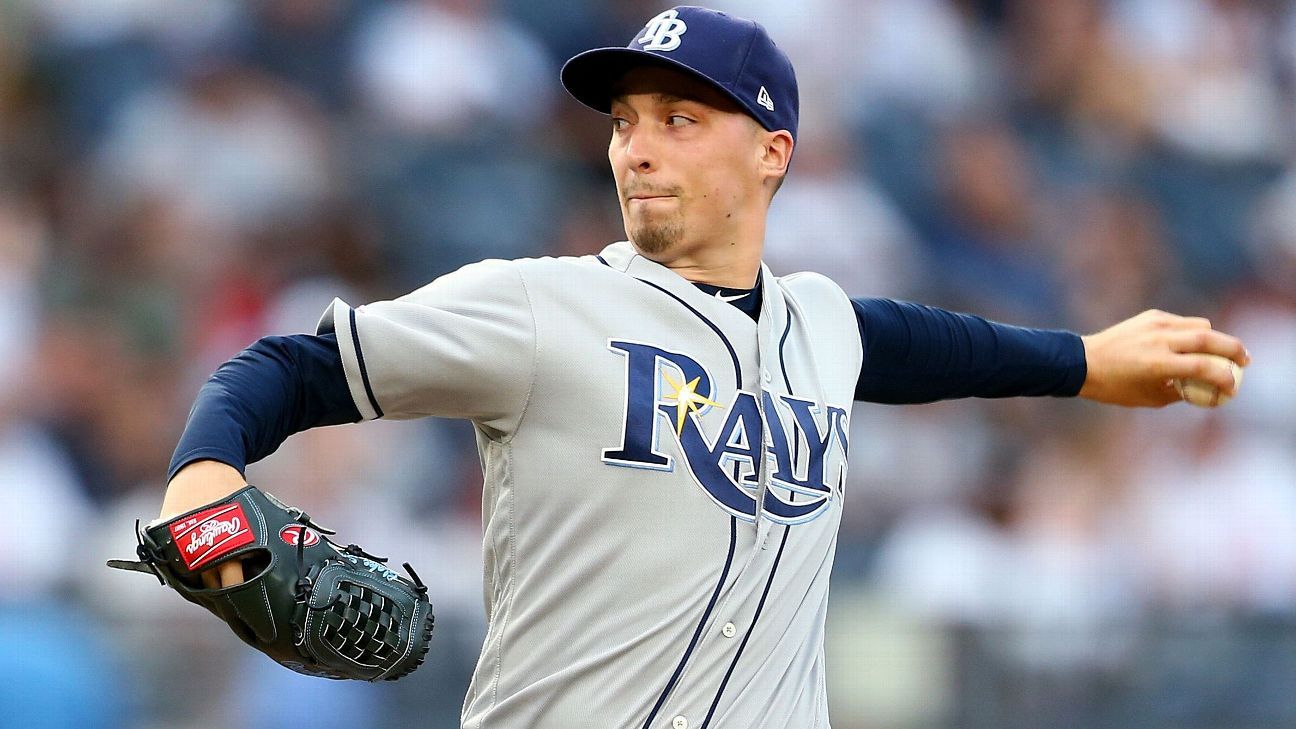
If the Tampa Bay Rays are going to hang in the AL playoff race, they'll have to do it without reigning AL Cy Young Award winner Blake Snell.
The 26-year-old left-hander was placed on the 10-day injured list Thursday and will have arthroscopic surgery to remove loose bodies from his pitching elbow. Team orthopedic surgeon Dr. Koco Eaton will perform the procedure Monday, and the Rays anticipate Snell will be ready to return in September.
An industry source told ESPN's Buster Olney that Snell is expected to miss about six weeks. However, it's also possible the time frame could be longer, the source said, because so much will be dependent on where the Rays are in the playoff races.
Through Wednesday's games, the Rays (58-47) trail the first-place New York Yankees by 10 games in the AL East and are just one game behind the Oakland Athletics (58-45) for the final spot in a competitive AL wild-card race.
If Snell's rehabilitation is seamless and the Rays are in a pennant fight, Snell might return to the rotation in early- to mid-September. If the Rays fall out of the race entirely, Tampa Bay would have the option of giving Snell more recovery time or even deferring his return to the spring of 2020.
Snell said he's confident the Rays can remain in playoff contention while he's out.
"With the team we have, I know they're going to ball out. I'm not worried about them," said Snell, who became the second Cy Young winner in franchise history last season, when he led the major leagues with 21 wins.
The 26-year-old lefty is 6-7 with a 4.28 ERA and 136 strikeouts in 20 starts this season, including 2-0 with a 1.64 ERA in outings since June 30.
Snell, who signed a $50 million, five-year contract during spring training, said he initially felt discomfort in his arm "three of four starts ago" and became more concerned while playing catch Tuesday. He had a MRI following a bullpen session Wednesday.
"I was upset," Snell said of his reaction to learning he would need surgery. "Felt like this whole year has kind of been that way. ... Every time I found my groove and felt like I was about to get going, something had to get in the way. Just very frustrating."
He becomes the latest talented Rays pitcher to hit the injured list, joining right-hander Tyler Glasnow.
The Associated Press contributed to this report.
Tagged under
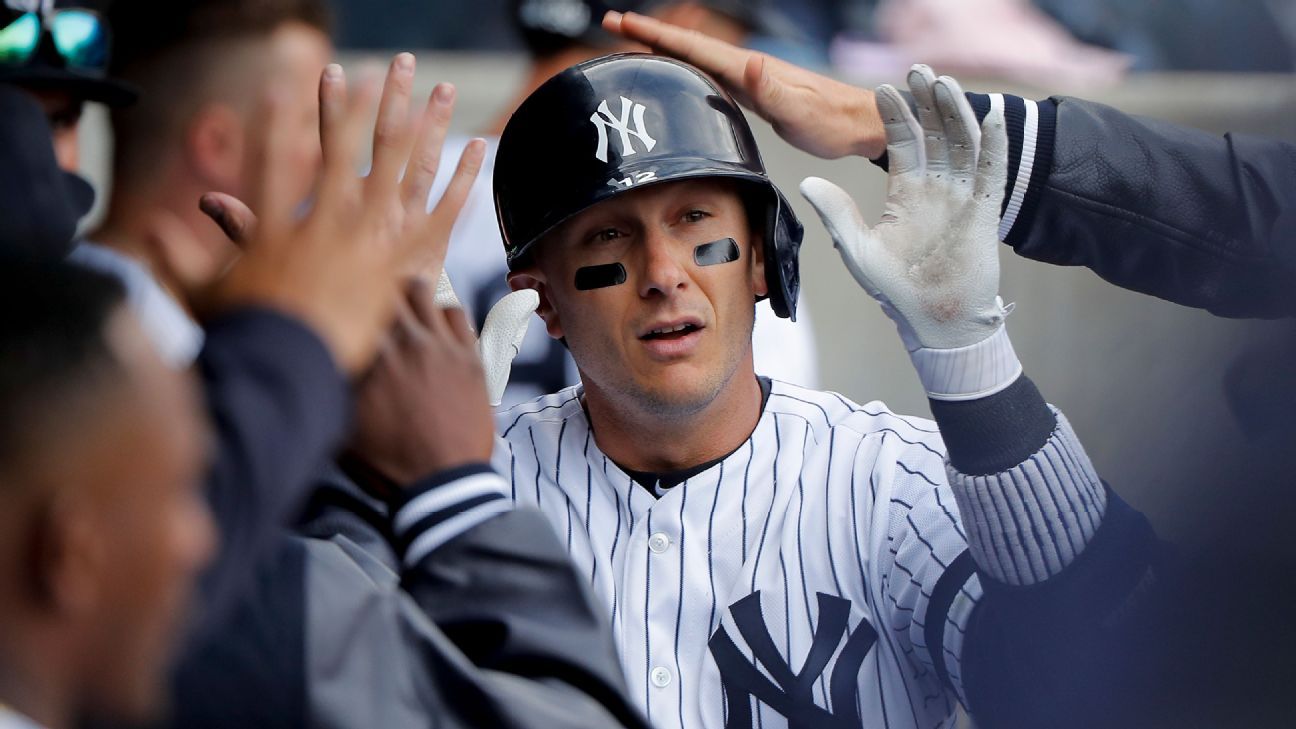
Troy Tulowitzki, a five-time All-Star with the Colorado Rockies who has missed most of the past two seasons with leg injuries, announced his retirement on Thursday, more than three months after he played in his last game for the New York Yankees.
"For as long as I can remember, my dream was to compete at the highest level as a Major League Baseball player ... to wear a big league uniform and play hard for my teammates and the fans," Tulowitzki said in the statement. "I will forever be grateful for every day that I've had to live out my dream. It has been an absolute honor.
"I will always look back with tremendous gratitude for having the privilege of playing as long as I did. There is no way to truly express my gratitude to the fans of Colorado, Toronto and New York. They always made my family and I feel so welcome."
Tulowitzki was NL Rookie of the Year runner-up in 2007, when he helped the Rockies reach the World Series for the only time in franchise history. He finished in the top 10 of the NL MVP voting three straight years from 2009-11; in all, he received MVP votes in six seasons.
He was traded to Toronto in the middle of 2015 and hit .254 with 24 homers and 79 RBIs the next year, his last full season in the majors. He spent most of 2017 on the disabled list with and ankle injuries, and then missed all of last season with following April 2018 surgery on both heels.
Tulowitzki played just five games this season -- his first with the Yankees -- before suffering a strained left calf on April 3.
"Even though injuries cut him short a little bit, it was a great career," Yankees manager Aaron Boone said. "What I'll remember is obviously a great player and a guy that played shortstop, a great shortstop, but played it in such a unique way and with a flair. ... He looked at home out there playing shortstop."
The two-time Gold Glove Award winner finishes his career with a .290 batting average with 225 home runs, 1,391 hits, 762 runs and 780 RBIs. Of his home runs, 223 came as a shortstop, which ranks seventh all time at the position.
He is one of three shortstops in major league history to with at least 20 home runs and a .290 average in six different seasons; the others are Alex Rodriguez (seven) and Nomar Garciaparra (six).
His best season was 2011, when he batted .302 with 30 home runs and 102 RBIs for the Rockies, with whom he broke into the majors in 2006.
He spent parts of 10 seasons in Colorado, and he still ranks among the franchise's top 10 in games played (1,048, fifth), runs (660, sixth), hits (1,165, seventh) and home runs (188, seventh).
He wore No. 2 in honor of Yankees shortstop Derek Jeter.
"While this chapter is now over, I look forward to continuing my involvement in the game that I love ... instructing and helping young players achieve their goals and dreams," Tulowitzki said in the statement. "I'm saying goodbye to Major League Baseball, but I will never say goodbye 2 the game I love."
The Associated Press contributed to this report.
Tagged under
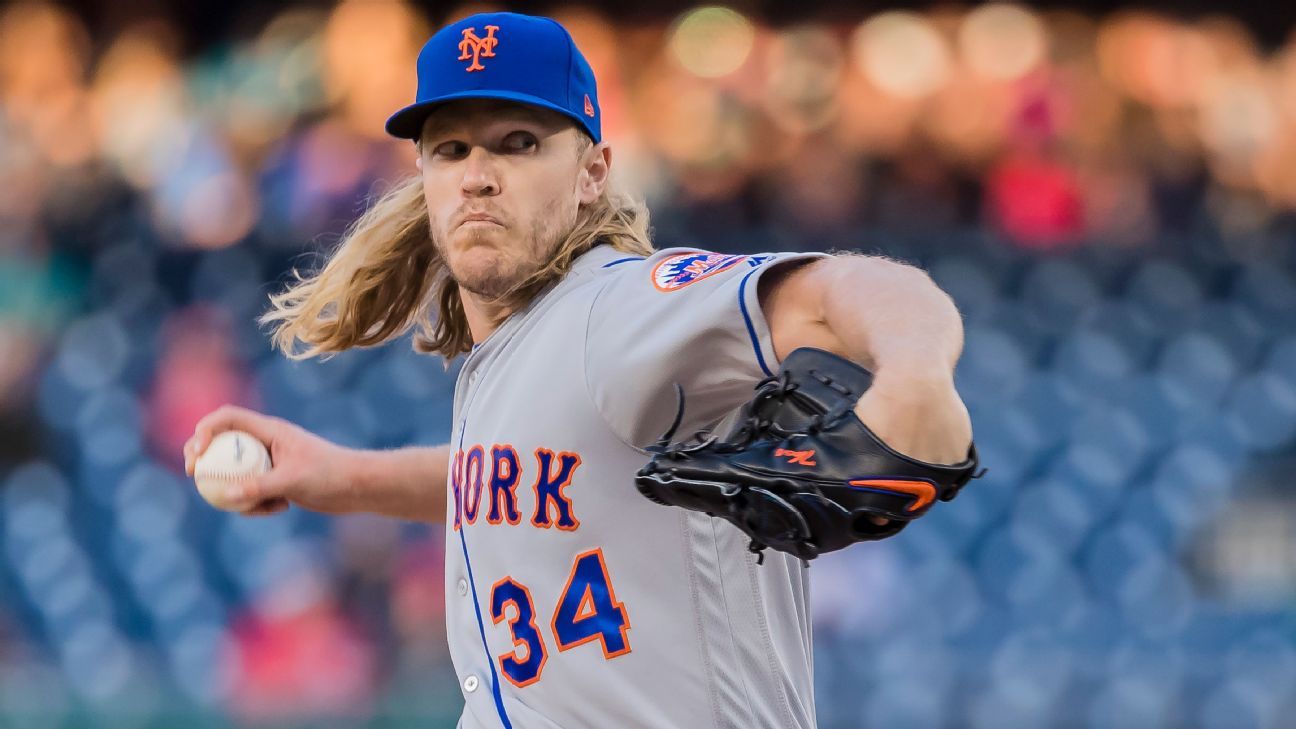
In the past, the New York Mets have been open about their willingness to listen to offers for Noah Syndergaard, as with other players. But some rival evaluators believe the Mets will trade the right-hander before the July 31 deadline.
"It's beyond listening," said one. "They want to move him."
Rival evaluators also believe that the Mets are serious in their willingness to swap closer Edwin Diaz, who was the centerpiece of the team's pricey deal with Seattle.
Syndergaard, 26, won't be eligible for free agency until after the 2021 season, and some teams have interest in him partly because of that two-plus years of control -- but largely it's because of his talent.
The San Diego Padres have talked to the Mets in the past about Syndergaard and envision the right-hander as the ace of a developing rotation. The Padres' farm system is loaded, creating lots of middle ground for San Diego to structure a deal.
The Astros are in the market for a starting pitcher to augment their 2019 team, and with Gerrit Cole headed to free agency in the fall, Syndergaard could be a fit for Houston.
Syndergaard has been erratic this season -- with a 7-5 record and 4.33 ERA -- but it seems unlikely that would deter possible suitors. Clubs like the Astros usually acquire players having created a plan to augment their performance. This is what Houston did with Charlie Morton when the team signed him to a two-year deal, and what it did with Justin Verlander after landing him in a trade at the end of August 2017.
The Braves, Yankees and Phillies are among the other clubs in search of starting pitching right now, but it seems highly unlikely the Mets would complete a deal with any of those division and market rivals.
The Dodgers are among the teams looking for elite relief help -- and Diaz certainly fits that description -- to help address the team's only real problem area.
Tagged under
Become the ITTF’s official merchandising partner!
Published in
Table Tennis
Wednesday, 24 July 2019 20:48

The International Table Tennis Federation (ITTF) is soliciting bids to become its first ever merchandising partner. The project involves the design and development of a comprehensive worldwide merchandise solution for the ITTF, including the development of a procurement, inventory and distribution strategy, the operation of an e-commerce/ online store and event merchandise platform.
The e-commerce platform will be the premier global source for “all things table tennis” and will allow table tennis brands to incorporate their products and services into the ITTF merchandise store.
At the same time, a coordinated event merchandise program will be developed to allow the ITTF to maximise event-related merchandise opportunities through e-commerce and on-site sales.
In order to provide a unique user experience, the ITTF merchandise program will be integrated into the wider ITTF data strategy across multiple platforms, allowing for targeted content to drive sales and engagement. Among the platforms mentioned are the ITTF’s official website (ITTF.com), livestreaming (itTV) and ticketing sites, as well as the ITTF’s multiple social media channels.
About the ITTF
The ITTF currently holds over 80 international table tennis events per year, seen live on TV in over 110 countries and currently has over 3 million social media followers.
Over the past decade, the ITTF has overseen the sport’s significant growth in terms of commercial value, global participation, world-class events and followership.
Naturally, fans play a fundamental role in the growth of the sport and their ever-increasing social presence shows great promise for table tennis in the e-commerce space.
Next steps
Proposals should be submitted before 15 August 2019 and include all required information as follows:
- Company Background
- Key Clients
- Strategic Vision
- Financial Proposal
- Implementation
- Implementation Timeline (which would see the launch of the ITTF’s e-commerce platform by no later than 15 October 2019).
Please click here for further information before sending your proposal via email to ITTF Marketing Manager, Mr. Seet Cheng Howe.
Tagged under
2019 ITTF World Hopes Week & Challenge kicks off in Oman!
Published in
Table Tennis
Thursday, 25 July 2019 03:47

Under the watchful eye of ITTF High Performance Manager Massimo Costantini and Head Coaches Jing Junhong (SGP) and Liu Jiayi (ENG), assisted by Mohamad Atoum (JOR) and Adnan Fawkhergi (OMA), 31 players and 23 coaches will convene in Oman for a six-day training camp, followed by the World Hopes Challenge on 31 July. Throughout the week, players will be evaluated by the coaching team on attributes of performance during training and competition.
Based on this, six to eight players per gender will be selected to continue on the expanded Hopes pathway and enter the Hopes Squad, attending certain follow-up activities throughout the next season that will grant the opportunity to qualify to the 2020 ITTF Hopes Team and attend the 2020 ITTF World Cadet Challenge. Selected players must demonstrate qualities of sportsmanship, such as training ethics, respect for other players, coaches and teamwork in order to progress. The winners of the Challenge competition will automatically earn a spot on the Hopes Squad.
Multiple educational sessions in the evenings will complement the practical training element, offering the participating coaches the opportunity to share experiences and learn from best practice examples. Leading on from the online coaching course “Early Talent ID and Hopes Stage Planning 2019”, which was offered on ittfeducation.com prior to the activity and included the opportunity to prepare an assignment, one of the educational sessions is reserved for the coach who prepared the best presentation.
The Hopes Programme is a series of activities at national, regional, continental and world level featuring education, training camps, competition and talent identification. The Hopes Programme is part of a seamless High Performance pathway that offers training and development opportunities for players from U11 to U21 and their coaches.
Click here for a list of qualified players.
Tagged under
Main draw places the reward, Huang Yan-Cheng attracts attention
Published in
Table Tennis
Thursday, 25 July 2019 08:11

Hard earned but in both the men’s singles and under 21 men’s singles events, the 16 year old reserved his place in the main draw.
In the men’s singles, facing host nation opponents, he beat Kim Song Il (7-11, 11-6, 13-11, 11-6), before overcoming Kim Hak Yong to reserve first position in the group (11-9, 11-5, 6-11, 9-11, 11-7).
Somewhat differently, in the under 21 men’s singles competition, on the second day of action, he experienced defeat at the hands of DPR Korea’s Ham Yu Song, the top seed (11-9, 11-8, 11-7) but secured second place as a result of the previous day having beaten India’s Mudit Dani (11-5, 11-9, 12-10) and Ryu Kuk Bin (11-5, 11-6, 11-9), like Ham Yu Song from the host nation.
Players finishing in first and second positions in each group in the under 21 men’s singles event advanced to the main draw; in the men’s singles, only first place guaranteed progress.
A place in the main draw of the under 21 men’s singles event for Huang Yan-Cheng, it was the same for colleagues Huang Yu-Jen and Feng Yi-Hsin as it was for Iran’s Amir Hossein Hodaei; all three ended the day in first positions.
Meanwhile, in the women’s singles, the player to stand out from the crowd was China’s Gu Ruochen. After being extended the full distance by DPR Korea’s Kim Mi Ra one day earlier (11-5, 9-11, 6-11, 11-7, 11-6), a straight games win in opposition to Chinese Taipei’s Cai Fong-En (11-2, 11-3, 12-10) secured first place.
Disappointment for Chinese Taipei but there was success in the under 21 women’s singles event. Similarly in a competition where finishing in the first two places in the group stage ensured progress, Chen Tung-Chen progressed as did Norway’s Ilka Duval.
Play in the main draw commences on Friday 26th July.
Tagged under










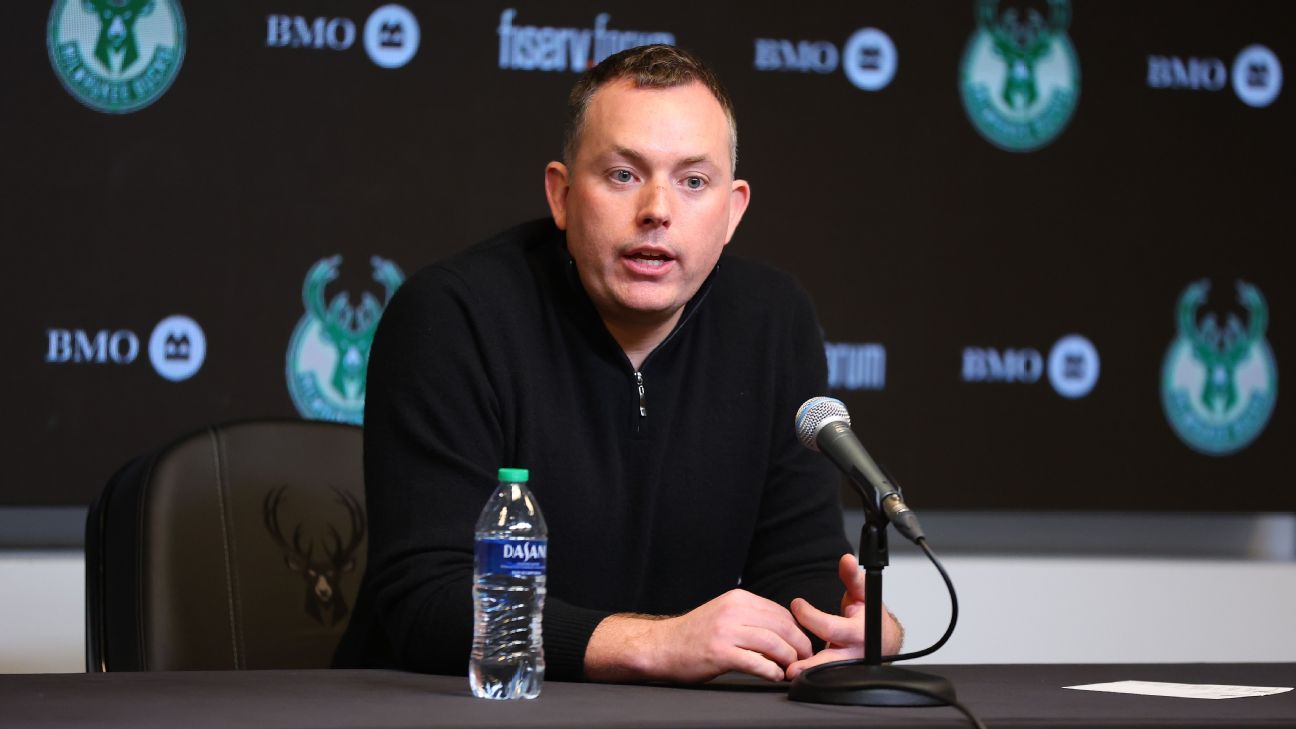




 Phone: (800) 737. 6040
Phone: (800) 737. 6040 Fax: (800) 825 5558
Fax: (800) 825 5558 Website:
Website:  Email:
Email: 






